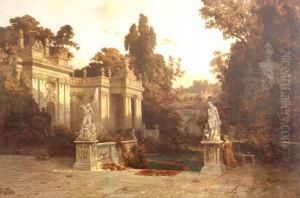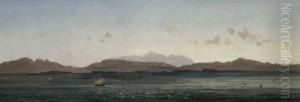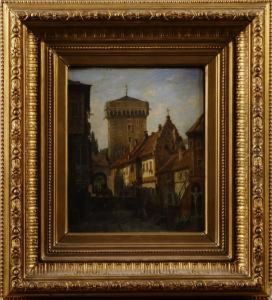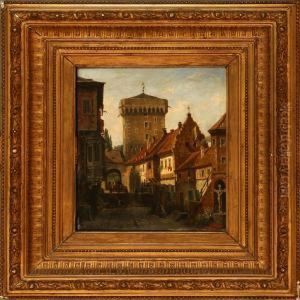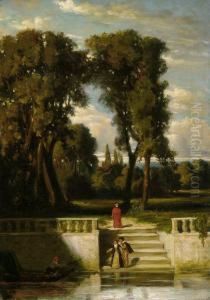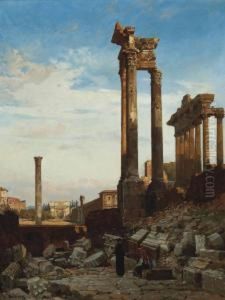Christian Johannes Wilberg Paintings
Christian Johannes Wilberg was a German painter and architect, born in 1839 in Havelberg, Prussia. He is best known for his detailed historical and architectural paintings, particularly those that portray the grandeur of antiquity and the Renaissance. Wilberg's work is characterized by its meticulous attention to architectural accuracy and its romantic, yet scholarly, depiction of ancient and historical scenes. Despite his relatively short life, dying in 1882 at the age of 43, Wilberg managed to leave a significant mark on the world of art, particularly within the genres of historical and architectural painting.
Wilberg began his artistic education at the Berlin Academy of Arts, where he initially focused on architecture. However, his passion for painting soon became apparent, leading him to combine his architectural skills with his love for the canvas. This unique blend of talents allowed him to create works that were not only beautiful but also architecturally precise. His paintings often featured ruins and architectural fantasies, filled with a sense of nostalgia and a longing for the past's glory.
Throughout his career, Wilberg traveled extensively in Italy, where he studied the ancient and Renaissance architecture that would later become central themes in his work. His travels and studies allowed him to develop a refined and accurate portrayal of architectural details, making his paintings highly valued for their historical and architectural accuracy as well as their aesthetic appeal.
Despite his contributions to art and architecture, Christian Johannes Wilberg remains a somewhat obscure figure, with his works being more appreciated by specialists in architectural history and historical painting rather than by the general public. However, his paintings continue to be studied and admired for their technical precision, their romantic beauty, and their ability to transport viewers to the bygone eras they depict. Wilberg's legacy lives on through his contributions to the visualization of historical architecture, offering a window into the past that blends artistic beauty with scholarly research.
